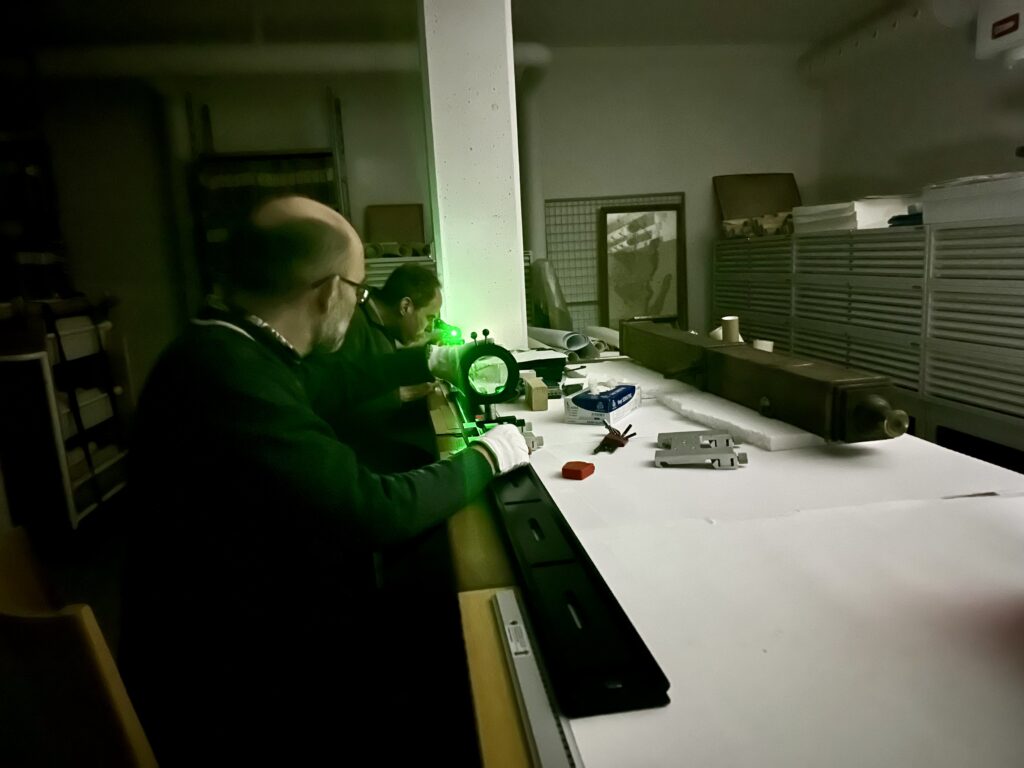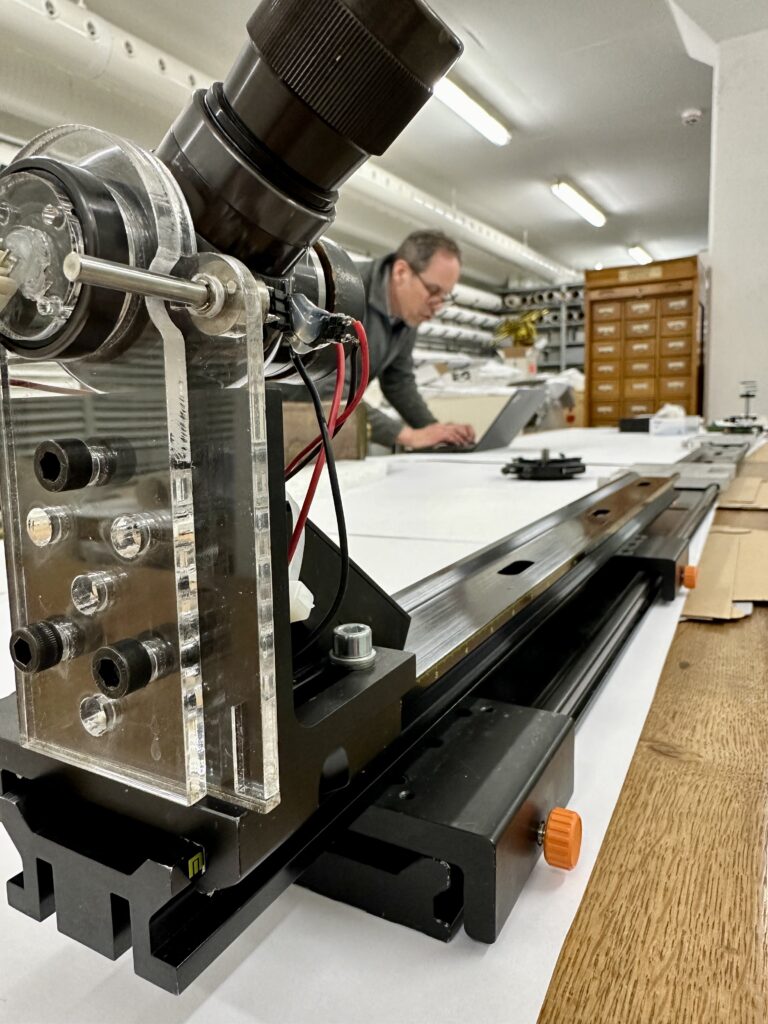At the Center for the History of Science, a technical investigation of the optical parameters of a famous telescope in the Academy of Sciences’ historical collections has been carried out in collaboration with an expert from Dresden and a historian of astronomy from Gothenburg. It is about Dollond’s achromatic refractor (KVA3233).
An achromatic lens is a lens system that reduces the effect of so-called chromatic aberration by focusing red light and blue light in the same plane. Partly inspired by a theoretical breakthrough by the Swedish mathematician Samuel Klingenstierna (1698–1765), the English instrument maker John Dollond (1706–1761) managed in the late 1750s, by combining crown glass and flint glass lenses, to create a working achromatic lens . Dollond quickly took out a patent for the solution, and the family controlled the production for a long time. Klingenstierna was later awarded a prize from the Russian Academy of Sciences for his contribution.

The telescope, which was originally intended for the English crown prince, the future George III, was bought in 1760 by Klingenstierna and to be used in the teaching of the Swedish crown prince, the future Gustav III. A few years later, in 1764, the telescope was sold on to the Swedish Academy of Sciences for 2000 Daler. Pehr Wargentin (1717–1783), director of the Stockholm Observatory, came to use the telescope for two decades for most of his observations, not least for his extensive investigations of the movements of Jupiter’s moons. He repeatedly testifies to the exceptionally good quality of the telescope.

The optical examination that has now been carried out has given preliminary evidence that the lens system of the Dollond telescope, even after more than 260 years, is of the utmost quality and that the curvature of the lens, considering the time it was manufactured, is impressively uniform.